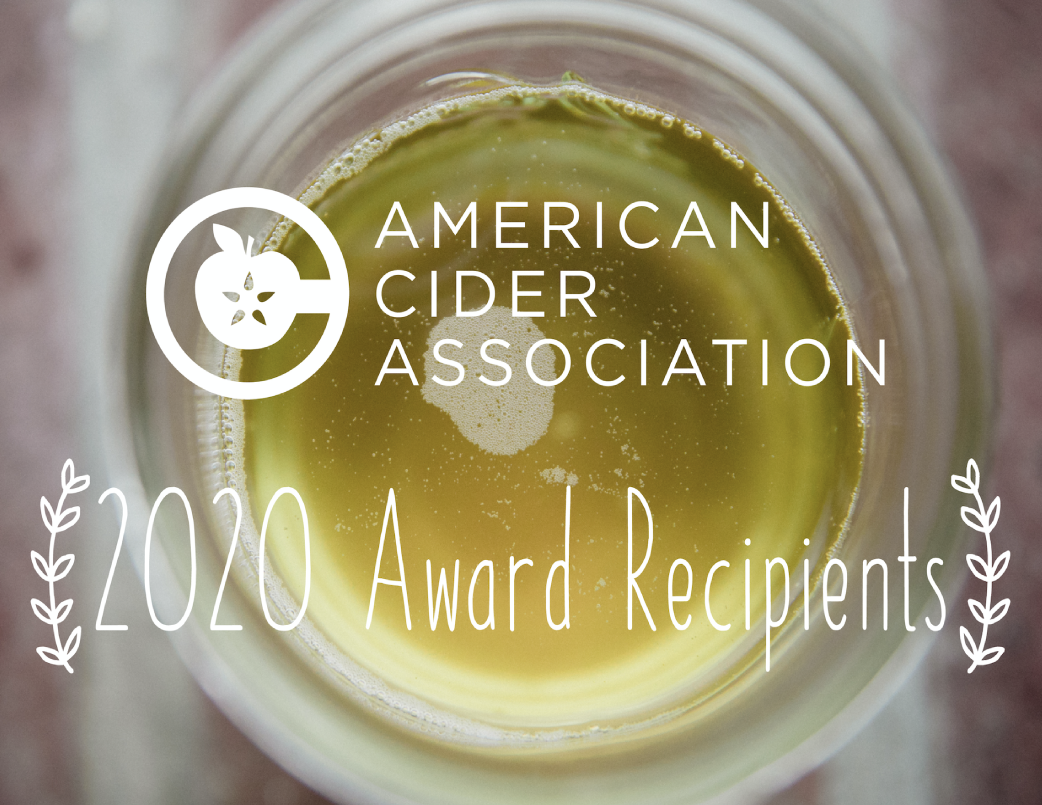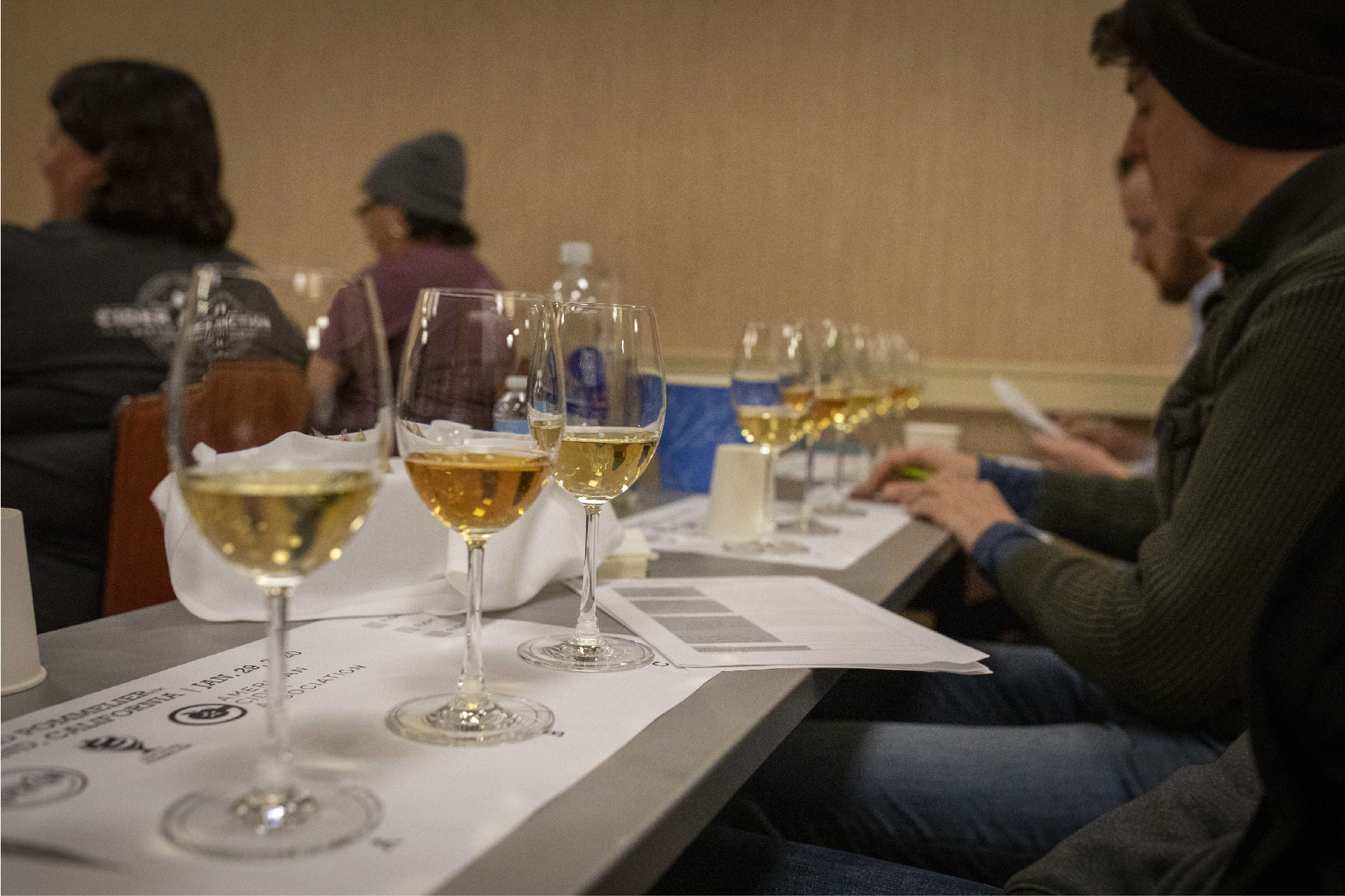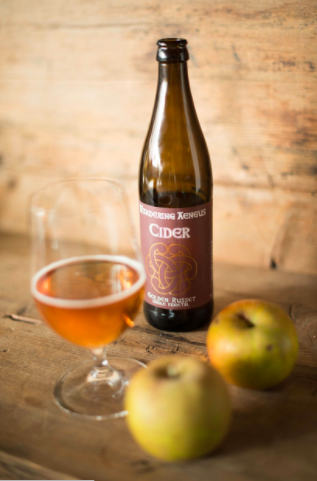Craft Beverage Coalition Letter to Congressional Leadership Seeking Support in COVID-19 Relief Package
The American Cider Association joined trade groups for wine, spirits, beer and mead in requesting the following support for the beverage alcohol community during the Covid-19 Pandemic:
Expand Unemployment Insurance
Suspend Payroll taxes
Provide federal excise tax relief
Provide Robust no- and low-interest loan assistance
Create an industry stabilization fund
Maintain an open commercial border
Seek the suspension of tariffs on beverage alcohol and their suppliers
The association is pursuing additional efforts to support state level relief policies including ease of shipping. Cideries can help us identify opportunities for relief by taking our brief impact survey.
Covid Resources for Cideries
We are in unprecedented times. We know you are facing economic uncertainty. As your association, we are here to listen to your challenges, and get help on its way in whatever capacity we can. Here are a few things we’re doing to help.
Provide an informational hub specific to our industry’s needs: We’ve launched our Covid-19 resource page. We’ll be updating this daily to help you access useful information.
Connect you to your peers to share challenges and solutions:We have launched a Facebook group for peer to peer networking with fellow members. We will also be monitoring our website’s forum. If there was ever a time to need to connect, now is it. Members can click here to request to join the Facebook group.
Unify our voice for our specific needs: The beverage alcohol community, including the American Cider Association, is working hard to advocate for solutions to relieve the impact of closures and lost jobs. Cider is absolutely an economic driver and that’s a story that is easy to tell. The beverage alcohol community is having early conversations about delayed excise taxes and other paths to help all our members keep their doors open in the long run. How has Covid impacted your business? What form of relief would help during this difficult time? Please take our 7-question survey to help us craft the message of urgency and need to Congress and the TTB.
Look to the future: It’s hard to think about much else than this crazy situation right now. Nevertheless, the American Cider Association is working hard to find ways to help our industry weather this storm, including keeping our eye on the future of the industry. Our long-term goals to grow a diverse and successful industry haven’t changed, and we won’t lose sight of them even as we focus on short term support. We are planning to host virtual town halls for all of our regions in May. You can sign up now, forget about them for a few weeks, and then join us for updates on our next 3-year strategic plan, including our compliance camp project to provide members with comprehensive resources on topics like excise taxes, labeling, franchise law and licenses. These town halls are open to all cideries—regardless of your membership status. Stay tuned for official dates and registration links.
We’ll be back with more resources to support you on a rolling basis over the next few weeks. Thank you for being a member so we can harness this industry’s collective power to do what it needs to thrive. In the coming days, check on your cider industry peers and friends. We promise to do the same. Cider IS stronger together.
Tax Class Code Update
Since the enactment of the CIDER Act, the cider tax rate applies to products that are under 8.5% ABV, under 0.64 gram of carbon dioxide per 100 milliliters and contain no other fruit than apples or pears. Until very recently, the TTB was requiring a tax class code on all products eligible for the hard cider tax rate. These requirements were part of temporary rules that were put in place in reaction to the expansion of the product types eligible for the reduced rate. They mandated that the code “Tax class 5041(b)(6)” be on the packaging of hard cider tax rate product. These rules have now expired–the reduced tax rate remains.
For now, the TTB is not mandating the use of the statement “Tax class 5041(b)(6).” Nevertheless, the regulations do say that all wines (including cider and fruit cider, all ABVs) must be labeled with enough information for TTB to identify the correct tax class.
“Using ‘Tax class 5041(b)(6)’ will meet that requirement, so no one has to change their label unless they choose to,” said Susan Evans, TTB Director, Office of Industry and State Outreach in an email to the Association.
In the absence of the statement of the Tax class 5041(b)(6), the label must provide enough information for the TTB to know that the product is under 8.5% ABV, under 0.64 gram of carbon dioxide per 100 milliliters and contains no other fruit than apples or pears.
We anticipate that the code requirement will return when the permanent rules are released, and will keep our members informed of such news.


Regional Cider Resilience
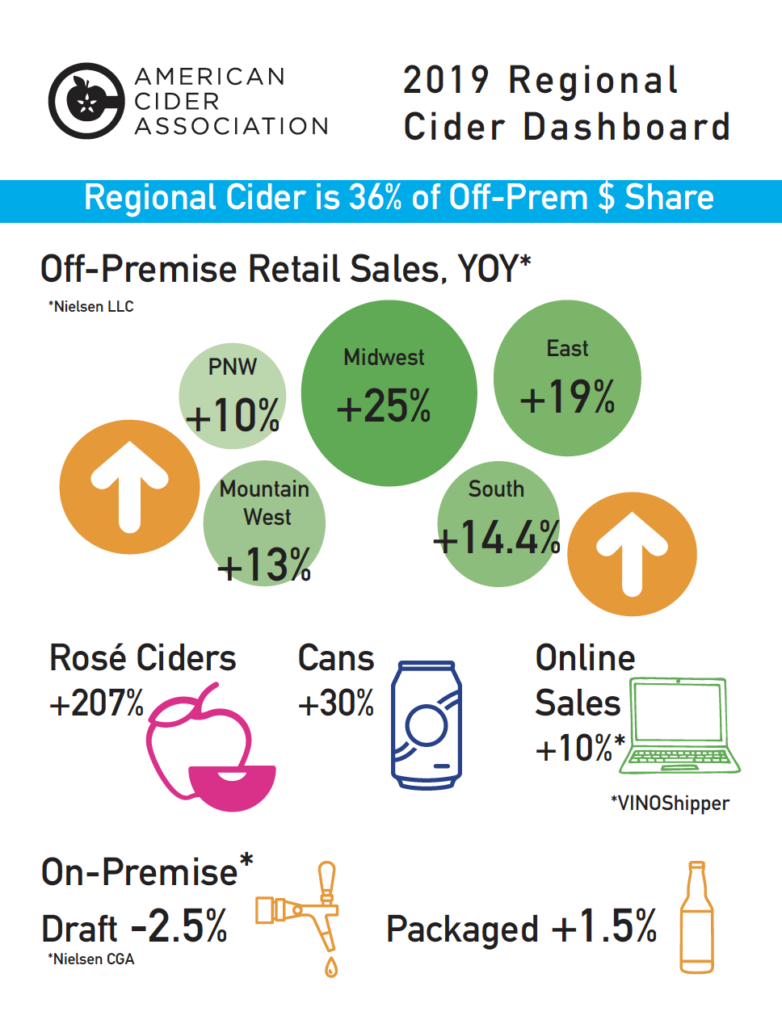
According to our partners at Nielsen, 2017 ended with soaring regional cider brand growth yet slight overall negative off-premise cider sales from the year before. Two year laters, annual total off-premise sales for 2019 were 6% higher than at the end of 2017. In a world where year over year or quarter over quarter is the easiest number to grab, important nuances sometimes get left behind.
For example, hard seltzer grew over 200% last year. You know what else grew over 200% last year? Rosé cider offerings from regional brands.
So before anybody starts citing “total cider sales” as being on a slight decline for 2019, make sure you point out the continued double digit growth (several years counting now) for regional and local cider brands. There are success stories for national brands too. We are not represented by one number and cider is finding sustainable growth.
More data is available for you. Nielsen trends and webinars are complimentary benefits to all American Cider Association members. The data is broken down by 24 regional markets for off-premise and on-premise details are also provided. It’s further broken down by packaging and flavor and national/regional brands. Nielsen also shares quarterly reports highlighting trends. Webinars, CiderCon presentations (including Nielsen’s), data and more can all be found after logging into our website with your active account.
We know that Nielsen data doesn’t take everyone’s sales into account, but we also know it does tend to reveal major trends. To complement Nielsen data, we are working to create new partnerships for your benefit with nontraditional data sources.
Our friends at Vinoshipper are a great example of the potential stories we can tell with alternative data (you can find Vinoshipper’s CiderCon presentation on our membership website after logging in). Their cider sales increased 10% last year. That’s direct to consumer cider sales!
My point? CIDER IS STILL GROWING and that’s the story we have to be sharing.
P.S. Have you sent your UPCs to Nielsen? ALL OF THEM? Please make sure you are being counted! Contact Nielsen to submit your labels.
PRESS RELEASE: American Cider Association Announces 2020 Award Winners
Contact Michelle for images and questions
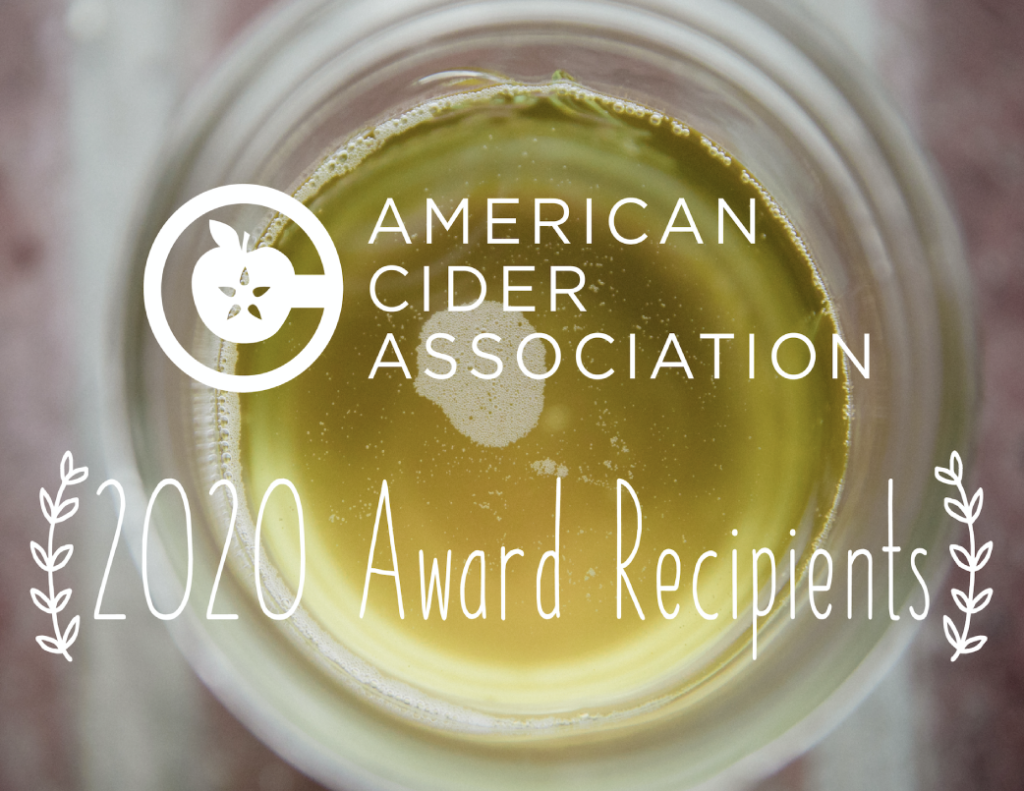
Hotels, Pizza Arcades, Distributors, and Wine Shops Among Those Recognized For Excellence In The Cider Industry
Portland, OR—Since CiderCon 2015, the American Cider Association has bestowed industry honors on deserving partners. The association uses its awards as an opportunity to highlight individuals and businesses helping the cider category grow. The scope has expanded as more and more related industries get on board with serving, selling and appreciating the American hard cider industry. This year, certain awards were first announced at CiderCon 2020 in Oakland, CA—including Apple Advocate of the Year to the legendary John Bunker of Maine. Today the association announced all 30 of the 2020 award recipients.
The winners are geographically diverse by design, but the on- and off-premise account categories truly stand out in their range. They include arcades, hotels and boutique wine shops. Nominations originate from the association’s members. This was the first year the association’s enthusiast-level members were invited to participate in the nominations along with trade and industry members.
“Our enthusiast members are out there drinking cider in their communities every day. They know who has the best cider list,” said the association’s board president, Paul Vander Heide.
“One of our goals is for cider to be a mainstream beverage, not just a niche offering. This year’s winners show us that we’re moving the needle on this goal. Local liquor stores are supporting cider, but so are seemingly random on-premise accounts,” said the association’s executive director, Michelle McGrath. “It will be fun to watch these categories over the next couple years.”
The awards also recognize distributors who are helping cider shine by maintaining diverse and plentiful cider portfolios and educating themselves about cider styles. “Regional cider brands grew 14.2% in 2019 according to Nielsen,” emphasized Vander Heide. “That didn’t happen in a vacuum. Distributors were absolutely key facilitators of that growth.”
McGrath hopes that winners show pride in their contributions to the sector. “I hope that all the winners feel great about supporting a growing industry that includes farmers, artisan producers, craft manufacturers and allied industries like steel and glass. It’s good to invest in cider—good for America,” she said.
2020 Cider Excellence Award Winners
- Apple Advocate of the Year: John Bunker of Maine
- Significant Contribution to the Cider Industry: Darlene Hayes of California
- Pommelier of the Year: (2 Awards) Brian Rutzen, Ambrosia Borowski of Illinois
- American Cider Association Member of the Year: Treehorn Cider, Atlanta, GA
- Cider Journalism Excellence: “Cider, Wine’s Overlooked Category” by Alexander Peartree for Wine Enthusiast
East Coast
- Best Cider Establishment: Brooklyn Cider House – Brooklyn, NY
- Best On-Premise: Prohibition Taproom – Philadelphia, PA
- Best Off-Premise: Boutique Wine, Spirits and Cider – Fishkill, NY
- Best Distributor: Farrell Distributing – South Burlington & Rutland, VT
Midwest
- Best Cider Establishment: The Northman – Chicago, IL
- Best On-Premise: The Coin Slot – Traverse City, MI
- Best Off-Premise: France 44 Wines & Spirits – Minneapolis, MN
- Best Distributor: Imperial Beverage – Kalamazoo, MI
Mountain West
- Best Cider Establishment: Acreage by Stem Ciders – Lafayette, CO
- Best On-Premise: Arcana – Boulder, CO
- Best Off-Premise: Wyatt’s Wet Goods – Longmont, CO
- Best Distributor: Culture Beverage – Westminster, CO
Pacific Coast:
- Best Cider Establishment: Redfield Cider Bar & Bottle Shop – Oakland, CA
- Best On-Premise: Button Mash – Los Angeles, CA
- Best Off-Premise: Bottle Barn – Santa Rosa, CA
- Best Distributor: Lime Ventures – Concord, CA
Northwest:
- Best Cider Establishment: Finnriver Farm & Cidery – Chimacum, WA
- Best On-Premise: The Dram Shop – Missoula, MT
- Best Off-Premise: John’s Marketplace – Portland, OR
- Best Distributor: Maletis Beverage – Portland, OR & Vancouver, WA
South:
- Best Cider Establishment: ANXO Cidery – Washington, DC
- Best On-Premise: The Durham Hotel – Durham, NC
- Best Off-Premise: Appalachian Vintner – Asheville, NC
- Best Distributor: Specialty Beverage of Virginia – Richmond, VA
###
CiderCon® 2020 in Oakland Declared Resounding Success
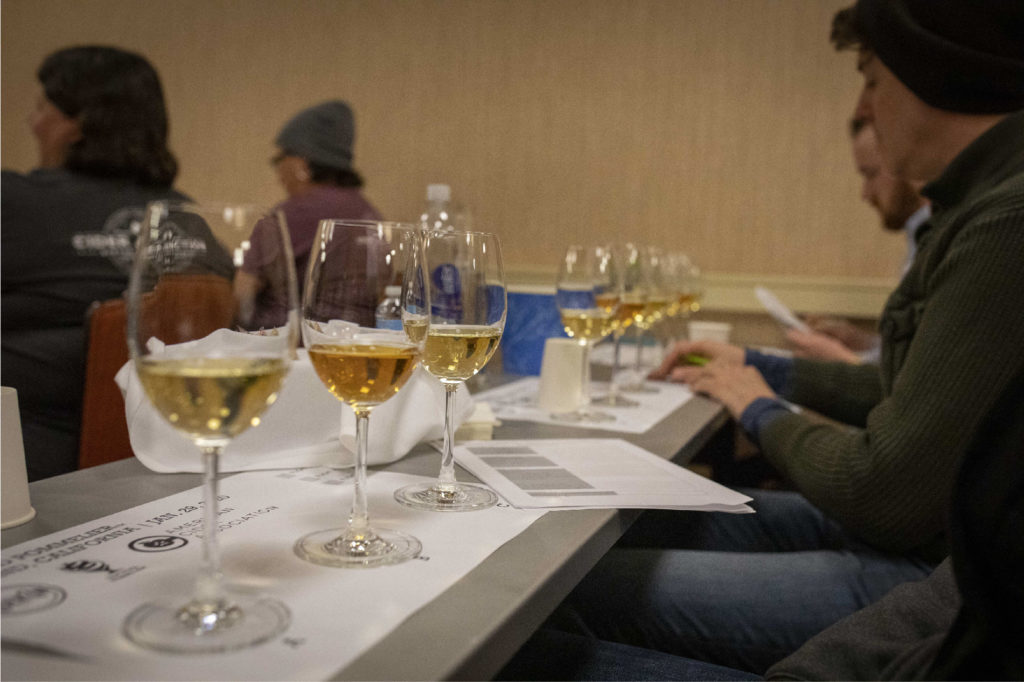
Photo by Brandon Buza.
Facts & Info for CiderCon® 2020
Media can contact us for images, assets and interview requests.
- The 10th annual CiderCon® took place in Oakland, California from January 28 to January 31, 2020. The program can be downloaded here.
- 35 states were represented, with California, New York, Michigan, Washington, Oregon, Massachusetts and Virginia bringing the most attendees.
- Members from 11 countries attended, including cider professionals from Canada, South Korea, Ireland, Japan, the United Kingdom, Russia, Kazakhstan, Spain and Switzerland.
- 1029 people attended. The conference has attracted more than 1000 people each year since 2016. The association moves the conference around the country to allow cideries from different regions the opportunity to participate.
- This year’s trade show was the largest CiderCon® trade show to date. The association has plans to continue growing the show. New features this year included an apple art gallery and chair massages. The Michigan Cider Association sponsored the cider game lounge in the trade show once more.
- Jill Giacomini of Point Reyes Farmstead Cheese Co. was the conference’s keynote speaker. She discussed the creamery’s value-based approach to innovation for growth. The general session included a selection of the creamery’s cheeses paired with a single varietal Gravenstein cider from Golden State Cider. The apples for the cider were grown less than thirty miles from the creamery.
- The featured international cider makers this year were from Ireland. Tempted, Cider Mill, Legacy and Stonewell shared their ciders with attendees during the grand toast, including a keeved cider and a dessert cider made in the style of a digestif.
- There were 14 total tasting sessions at CiderCon® 2020.
- The American Cider Association offered its Certified PommelierTM exam at CiderCon® 2020, an advanced second level designation of its Certified Cider Professional program geared toward beverage and hospitality industry professionals. More than 40 people sat for the challenging test that includes a sensory evaluation section. Certification passage rates will be announced later this month. This was the third seating for the test.
- Nearly 200 people participated in CiderCon®’s tours this year. Buses took attendees to explore the terroir of Sonoma County & Pajaro Valley cideries and orchards. Additionally, a tour of East Bay’s Filoli Gardens explored the history of Californian orchardist Albert Etter, including tasting ciders made from apples he cultivated in the early 1900s. A fourth bus met with individual cideries and cider bars to dive deep into cider and food pairing techniques.
- The American Cider Association partnered with the Cider Institute of North America to co-develop a large production oriented and technical-in-nature workshop track with 11 sessions on topics from developing an in-house sensory evaluation program to aging ciders. The Cider Institute of North America trains cider makers through their educational programming in partnership with universities like Cornell.
- Additionally, the American Cider Association had several popular sessions on orcharding that included orchard tours, techniques for elevating apple character, carbon farming, dry farming, seedling identification, grafting and more. The association was thrilled to expand its orchard-based education at CiderCon® and is excited by how popular it was.
- Nielsen, Social Standards and ISWR presented in three separate sessions on market trends data at CiderCon® 2020.
- Nielsen reported that the cider market is 10 times bigger than it was 10 years ago. Regional/local ciders sales are up +15% YOY and their share is now 40% nationally in off-premise sales. Regional/local ciders are almost half of on-premise sales. Many, many top brands are growing and seeing double digit growth.
- Five legal and compliance sessions were also offered in addition to a ½ day workshop with the TTB, the federal agency responsible for regulation cider taxes and labels.
- The Pomme Boots Society partnered with the Association to offer unique content for CiderCon® this year. Pomme Boots Society is an organization for women working in the cider industry. Susanna Forbes of Little Pomona Cider in the United Kingdom addressed a packed room as the guest speaker at their annual meeting.
- The American Cider Association was honored to have “Dr. J” Jackson-Beckham present techniques and strategies for authentically engaging underrepresented populations in the cider industry. Dr. J is the Diversity Ambassador for the Brewers Association and the Founder and Executive Director of Craft x EDU.
- CiderCon® 2020 took place during the first annual Bay Area Cider Week, a series of cider-based entertainment and education events throughout the greater Bay Area. More than 50 events were coordinated by California’s cider community.
- The Cider Association’s annual board elections happen concurrently with CiderCon®. Newly elected board members were announced during lunch on Friday and include: Phillippe Bishop of Alpenfire Cider in Washington (At Large seat), Nicole Todd of Santa Cruz Cider in California (Pacific Coast chair), Talia Haykin of Haykin Family Cider in Colorado (Mountain West chair), John Behrens of Farmhaus Cider in Michigan (Midwest Chair), and Dave Takush of 2 Towns Cider House in Oregon (Large Cidery seat).
CiderCon® 2021 will be in Chicago, Illinois – February 2-5.

CiderCon® was created to offer the commercial cider industry an outlet to meet, share ideas, collaborate and affect positive changes in cider making and cider fruit production best practices, the cider market and cider regulations. CiderCon® is organized by the American Cider Association whose mission is to grow a diverse and successful U.S. cider industry by providing valuable information, resources and services to our members and by advocating on their behalf.

2020 American Cider Association Board Candidates
It’s almost election time for your 2020 board of directors. We’ll be sending out electronic ballots to all of our Cidery-level active members on Wednesday and the ballot will be open until Friday morning, so keep your eyes peeled for that!
We want to thank Eric Foster of Stem Ciders, Brian Shanks of Bold Rock and Dan Young of Tandem Cider for their dedication and service to the board for the last 3 years. All three brought passion to their roles that helped us evolve the association to what we are today. Thank you for your contributions!
Please meet your 2020 board candidates:
At Large
Phillippe Bishop, Alpenfire Cider, Washington
I am a partner in Alpenfire Cider, a small, family-run cidery based in Northwestern WA. We planted our orchard back in 2003 specifically for making cider and have seen lots of growth and changes in the industry since then. I primarily handle the sales side of things in and out of our region, but with any small company we all wear many hats. I believe the American Cider Association has been doing a good job operating as a megaphone for the whole industry nationwide. I have worked with the association on projects like the CCP and Lexicon, as well as spoken at CiderCon in the past. I now feel it is time for me to step up and take a more vocal role in the national community.
A couple goals I would like to work on is increasing communication with the on and off premise trade and distribution side of things, making it easier for them to sell our products to the trade or to the consumer with proper language that can be easily understood. Part of my background is working for a small craft focused distributor and seeing the challenges and frustrations on both sides of the sales and producers game. I would like to help the association come up with economical and straightforward ways to remediate that. Additionally, being a grower producer from an apple growing region we know there are a lot of wonderful apple growers and varieties not being utilized. I would like to find way to bridge the gap between grower and producer. Due to our size we have to turn away fruit every year that could make some exciting cider and I would like to find a way to make it easier for growers to find producers and vice-versa.
Lyndon Smith, Botanist and Barrel, North Carolina
I am a co-founder of Botanist and Barrel. In 2009, I launched a natural wine distribution company. I left to follow my passion for agriculture. Along with my family, I created Cedar Grove Blueberry Farm and Botanist & Barrel’s Farmhouse Cidery in 2015. I established NC’s first wild and spontaneous festival, and Funk Down on the Farm. I love research, analytics, supporting local farms, native fruits and southern terroir.
As a board member I’d bring innovative and creative ideas with a rising tide mentality. As cider pros we have our own language to describe different styles of cider; BUT do these terms mean anything to consumers? To grow our market, we need to identify consumer preferences through focus groups and learn what consumers listen for as they choose cider. We must develop the vocabulary, the marketing & the imagery that resonates with cider drinkers to expand the cider audience as a whole. We can develop and create actionable promotional materials and packaging by reverse engineering how we talk about cider using empirical data. For example “brewing hard cider” was the 16th most searched for term on google in the last 30 days, so we have our work cut out for us.
We all produce amazing beverages. Let’s make sure we can prosper.
Ned Lawton, Ethic Ciders, California
Together with my wife, I brought Ethic Ciders to life in 2015 after purchasing a farm and old apple orchard in Sebastopol, California. Five years into tending to the land through regenerative farming practices, our orchard is now 100-percent organically certified and has been declared by the NCRS a test site for implementation of the first ever carbon-farming apple orchard. I believe that cider can be a leader as a sustainable land-based beverage and as a healthy choice for consumers. As a board member, I would identify opportunities to share this message. I also believe the association can be a tremendous resource for small cideries when it comes to compliance, the TTB, regulations and policy, and I would champion these efforts. My goal would be to engage with the board and the government affairs committee as a voice for small orchard-based cideries. I love cider because of the potential for it to connect people with the land, and I think I can bring that perspective to the board. I’m inspired to lend my contributions to the association and work together to pursue our market growth as a long-term strategy that celebrates all sectors of cider, including small orchard-based operations.
Mountain West: AZ, CO, NM, NV, UT, WY, SD, ND, KS, NE, OK, TX
Talia Haykin, Haykin Family Cider, Colorado
I am the co-founder of Haykin Family Cider with my husband, Daniel. Prior and concurrent to that, I run my freelance marketing company and served as the Chief Marketing Officer for large non-profits in Denver. I developed a social media Masters program for DU. Within our business, I do every job from bottling to shipping to selling to marketing. Every successful market is stratified and that is important for our cider market as well. However, all types of producers should feel like they have a voice. I’d like to bring a small, harvest-based producer voice to the association, advocating on behalf of apples and smaller producers. That being said, collaboration/cooperation/camaraderie are key. A rising tide lifts all boats and a successful cider industry, benefits us all.
Casie Wiginton, Texas Keeper, Texas
I am the Taproom Manager of Texas Keeper Cider in Austin, a level 1 CCP and currently in pursuit to be a Certified Pommelier. With a 22-year background in the industry and large reaching organizations like the American Cheese Society, I believe an emphasis on education and community engagement are necessary to broaden the reach of the cider world. I bring a unique perspective to the American Cider Association’s Board of Directors by providing a bridge to business owners, their staff, and customers. I am not a Cidermaker nor CEO but an advocate for education, community engagement, and broadening the reach of the craft world. I intend to develop resources to nurture and grow a diffuse circle of artisans into a robust community in touch with those they affect and inspire. I believe that my passion and skills honed thus far will drive a flow of communication and engagement across the Mountain West region, necessary for continued growth of our industry.
Pacific Coast: CA, HI
Sarah Hemly, Hemly Cider, California
In 2015 I co-founded Hemly Cider in Courtland California as an estate grown cider company with a unique passion for pears . I run the cider company and my husband grows the fruit. If elected, I bring to the board experience with getting pear pumice on every inch of my clothing. Today, we in the cider industry have a unique opportunity to create a movement, grow our market and impact the global economy. An important point of differentiation from other alcoholic beverage industries that is notably relevant in today’s market. The one thing every one of us in the cider industry has in common: Trees. Here in California companies like Ethic Cider are brilliantly promoting the fact that apple trees contribute to carbon sequestration. Recently, Greta Thunberg and George Monbiot proposed planting and preserving trees as a tool to combat global climate change. Can we, as an industry unite under one cause, promote cider, disrupt the market and stand for something bigger than ourselves? #DrinkCider, better for you, better for the planet.
Nicole Todd, Santa Cruz Cider Company, California
I began my fermentation career in 2005 at Bonny Doon Vineyard, then changed gears to work at a brewery and found my love for cider with a truck bed of found apples. I started Santa Cruz Cider Co with my husband and my sister in 2013. We have grown slowly and organically by building our cidery from the ground up. Having my own small business keeps me involved in every step of the industry, from orchards, pressing, packaging and selling. I have worked closely with other local cidermakers and growers to create a community that shares resources to help us all grow. I would like to help create this for the Pacific region of the American Cider Association by building a network that all Pacific cidermakers (and beyond) can benefit from. We can accomplish this by growing the educational platform, promoting cider legislation and by sharing information and resources on fruit sourcing, packaging materials, equipment, etc. This in turn will create a stronger community that represents all of us.
Pacific Northwest: OR, WA, ID, MT, AK
Marcus Robert, Tieton Ciderworks, Washington
I am the Cider Maker and Co-Owner of Tieton Cider Works. I am a fourth-generation farmer and still own and operate the same family orchard I grew up on in the Yakima Valley. My wife and I also own a small winery where I have been making and selling wine for nearly two decades. Our Northwest Region is particularly special in that we grow more than twice as many apples than the rest of the nation combined. We also have the highest per capita consumption of cider in the country. Our overall investments and opportunity in the Northwest cider market is enormous, legislation permitting. Whether we know it or not, the rules and regulations that our industry abides by are the limiting factors to getting our products to our consumers. My goal is to help ease those regulatory factors while keeping the purity of product secure. I will continue to push for legislative changes that provide our members with real and lasting value.
Midwest: IA, IL, IN, MI, MN, MO, OH, WI, KY
John Behrens, Farmhaus Cider, Michigan
I am the co-founder and owner of Farmhaus Cider located in Hudsonville, Michigan along with my wife, Megan. I also serve as the President of the Michigan Cider Association as well as recently helping to oversee GLINTCAP, the world’s largest cider competition. Prior to starting Farmhaus, I worked as a CPA for 10 years, first in general practice and then transitioning into corporate roles, experiences that I believe would be valuable to the board. I believe the cider industry has built a very solid grassroots foundation, but for us to get to the next level we need to work together to market cider to a much wider audience. We are uniquely positioned as an industry to capitalize on changing consumer tastes, but for that to happen, cider in a wide variety of styles needs to go mainstream. The American Cider Association has an important role to play in helping achieve that goal.
I also feel a strong legislative presence is important to the continued growth of cider. If we are going to even the playing field with beer, wine and spirits we need to appear just as important to our representatives in Washington. I believe the American Cider Association has done a lot of good work in this area, but more work remains.
Large Cidery (>1M gallons)
Dave Takush, 2 Towns Ciderhouse, Oregon
My passion for fermentation led me to join two childhood friends in starting 2 Towns Ciderhouse in Corvallis, Oregon where I am co-owner and head cidermaker. Now one of the largest cider producers in the nation, 2 Towns has over 100 employees and is dedicated to producing quality craft cider from 100-percent, fresh-pressed Pacific Northwest apples. I am so darn excited to be running for the large cidery board position for the American Cider Association. As a board member, I intend to help promote positivity and unity within the cider community. I will focus my efforts on encouraging legislative initiatives that will bring positive change for all industry members.
Fresh-pressed Member Updates: January
CiderCon® is less than two weeks away! We have conference updates to share, but there is so much more to tell you about. First thing first, though…
- CiderCon®!
- Today is the last day to register at the $395 price. Head over to the website and sign up to take advantage of the savings.
- We’ve lined up near 100 amazing speakers for this year’s conference, including the newly added John “The Apple Whisperer” Bunker! His book will be available in the CiderCon® bookstore. We’ve just updated our schedule grid. Take a peek here.
- Our trade show is full of amazing vendors. Preview the event, and if you are interested in purchasing one of our limited trade show only passes, contact us.
- Did you hear William Mullan and his odd apples are coming?
- Want to know more? The conference app is back! To get it: (1) Download Attendify (2) Search for CiderCon (3) Use the event code GoEkos. Thank you, Ekos for sponsoring this year’s app.
- Winter Member Webinar
- On February 7 we are thrilled to have Maria Pearman of Perkins & Company speak with our members about how to take advantage of the savings in the Craft Beverage Modernization and Tax Reform Act. This webinar is free for members and $30 for non-members. Sign up here.
- New Sales Tools
- Our marketing committee has developed these handouts to help you educate your accounts about cider. Take a look at our brand new on-premise tool, complete with food pairing tips, and our updated off-premise tool. You can find these at any time on the resources page of our website. Stay tuned for more tools like this!
- Certified Cider Professional program
- We’ve updated both the introductory exam and the more advanced Certified PommelierTM test. You can learn about these changes and more here.
- New Swag
- We’ve stocked a ton of new t-shirts in our digital storefront! Check it out here.
- Dry Cider January
- We list over 200 0g sugar ciders in our Dry Cider Directory now! If you haven’t uploaded your no-sugar ciders yet, please do that here. Note that inclusion in the directory is for members only.
CCP Program Updates
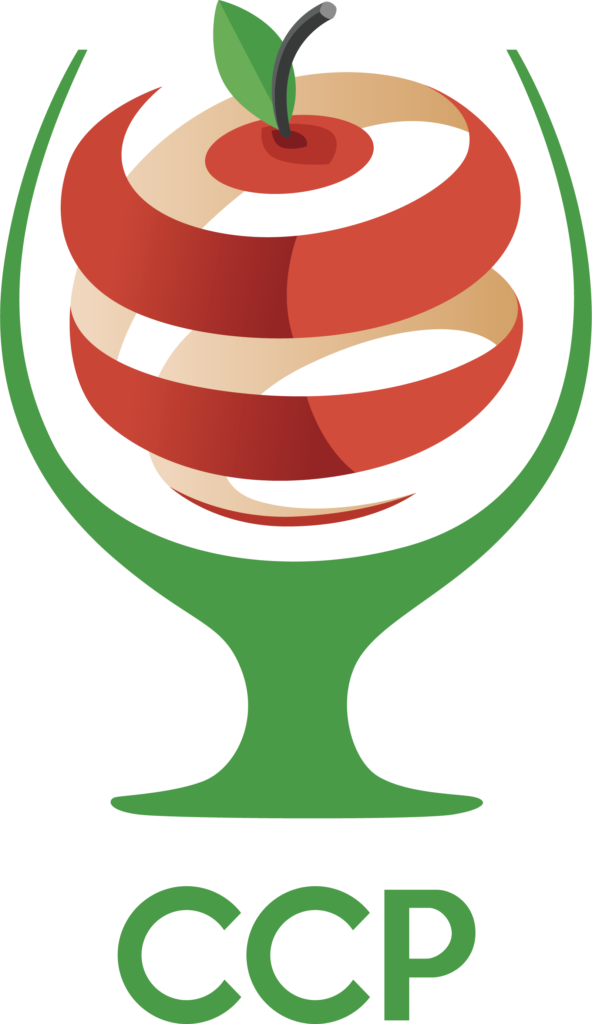
We have some exciting announcements about the Certified Cider Professional (CCP) program! We first launched the CCP program in 2016, and it has continually evolved to meet the needs of our ideal audience in allied industries. What do food and beverage professionals need to know about cider to sell more of it to happy consumers? That remains our guiding question.
Here are some of the exciting changes we’ve made!
- We evolved our style guide into a cider lexicon. It was industry input that lead us to these changes. The lexicon is still open for feedback and you can preview it here. Please reach out with questions at lexicon@ciderassociation.org. It is a developing tool, but our exams and study guides are now emphasizing five cider families instead of styles. Additionally, we focus on the established scientific classifications for apples: bittersweet, bittersharp, sweet and sharp.
- We launched Version 3 of the introductory Certified Cider Professional exam to reflect the above changes and refine questions. We’ve updated our study guide accordingly. Exam links on the CCP website now direct you to the updated test.
- We adapted the Certified Pommelier™ exam and study guide to reflect the new direction of the lexicon project. These can also be found on the CCP website. The next test, taking place in Oakland, California during CiderCon®, contains these changes. The exam emphasizes these topics in order of relative importance: (1) Flavors and Families (2) Apples & The Orchard (3) Cider Making (4) Food Pairing (5) Evaluating Family (6) Keeping & Serving.
- We’ve redesigned the sensory portion of the Certified Pommelier™ exam. After much review, we felt that doctored samples were not representative of the skill we were hoping to test: the ability to evaluate a cider and all its characteristics. The flaw identification portion of the exam has therefore changed. Instead of being asked to id flaws students will be asked to evaluate three ciders. These ciders may or may not contain characteristics perceived as flaws. They will not be doctored. A structured sensory analysis worksheet will be provided for the exam. You can view a sample of that worksheet and learn more here. (Students should still know specified flaws and their causes).
- We created a Facebook group for potential Certified Pommelier™ test takers. The emphasis is on peer learning. We are encouraging Certified Pommeliers to join the group and share their wisdom and for those studying to share their resources.
In 2020 you can expect:
- More opportunities to take the Certified Pommelier™ exam
- The launch of an online training for the introductory Certified Cider Professional program
- Announcements about specialty certificates in topics like draft systems for cider
- The development of more published study materials for both the introductory level and the more advanced Certified Pommelier™
- New tools such as a CCP directory
Watch our website for the announcement of future exam possibilities. Demand for the CCP program is growing, and we are rising to meet that demand!
Visit here to sign up for the Certified Pommelier on January 28 in Oakland.
Dry Cider Directory
We’re collecting the 0g sugar ciders of all our members and loading them into the air table below! Explore the directory filters and sorting options and learn what you can seek out in your area. Join us in the conversation about no-sugar ciders on Instagram with #pickdrycider. Please confirm nutritional information with the cideries themselves.


